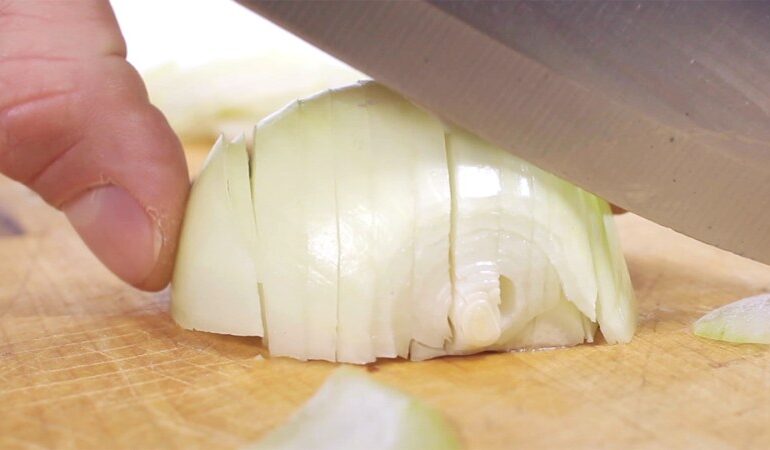Knife Techniques Reduce Onion Tears, Study Reveals

A recent study published in the October 21, 2023 edition of the Proceedings of the National Academy of Sciences has uncovered a simple yet effective technique for reducing tears while cutting onions. Researchers found that using sharper knives and cutting at a slower pace significantly decreases the amount of tear-inducing droplets released into the air.
The primary culprit behind the tears is a chemical compound known as propanethial S-oxide. When an onion is sliced, its cells rupture, triggering a chemical reaction that produces this irritant. The compound quickly disperses in the air, where it binds to sensory nerves in the eyes, causing discomfort and tears.
Navid Hooshanginejad, a physicist affiliated with SharkNinja and formerly at Cornell University, initiated the study while preparing onions for a salad. During this process, drops of onion juice landed on his hand, leading him to ponder the potential for airborne droplets to reach eye level and cause tears.
Research Methodology and Findings
To investigate the phenomenon, Hooshanginejad and his colleagues conducted a series of experiments using a high-speed camera and various knife types. They even constructed a miniature guillotine to analyze the behavior of onion juices upon being cut. The team measured the force and speed of each cut, noting the differences in the release of droplets based on the sharpness of the blades.
The results were striking. Blunt knives not only required more force to cut through the onion but also resulted in liquid droplets being propelled nearly 40 meters high—almost half the height of a giant sequoia. In contrast, slower and more precise cuts with sharper knives minimized the height these droplets could reach, preventing them from becoming a nuisance.
Jim Wilking, a physicist at Mayo Clinic, explained the mechanics of the findings by comparing the onion’s pressure system to a water balloon. He noted that using a sharp knife is akin to pricking a balloon with a needle, which requires less force than pressing down with a finger, thereby reducing the distance the liquid travels.
Broader Implications
The implications of this research extend beyond the kitchen. Understanding how onion juices are dispersed can provide insights into how pathogens spread in various biological systems. Hooshanginejad posits that the principles observed in onion cutting could inform broader studies on aerosol transmission, which has become increasingly relevant in the context of public health.
As culinary enthusiasts and home cooks alike seek ways to enhance their cooking experience, this study offers a practical solution to a common kitchen dilemma. With the right tools and techniques, one can enjoy preparing onions without the tears that have long accompanied the task.






